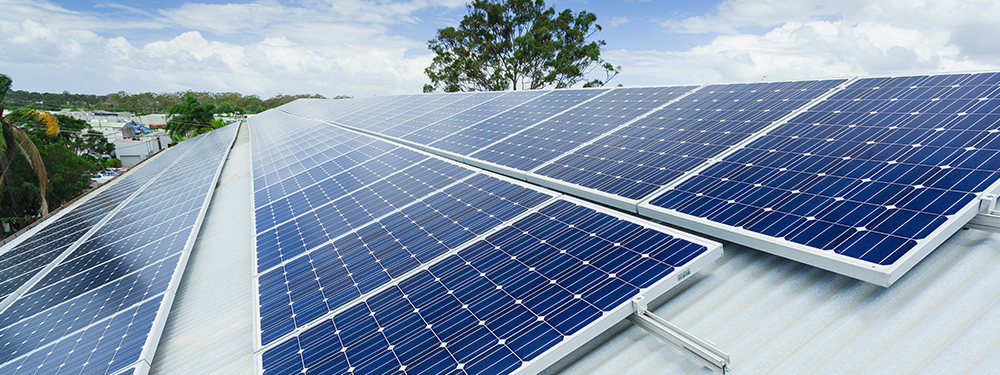Ranching is a competitive industry.
And if you’re a rancher, your profits depend on factors that aren’t always under your control:
- Global demand shifts
- Market price fluctuations
- Droughts conditions
What’s more, the US Department of Agriculture predicts exports in animal products will increase in 2021 but remain unchanged or decline for 2022.
Unpredictability is leading many ranchers to consider starting a solar farm to supplement their incomes.
There are bountiful benefits for those who decide to go this route.
A Solar Farm Provides a Second Income Stream
With the demand for alternative energy skyrocketing and material costs dropping, turning a portion of your ranch into a community- or utility-scale solar facility may be attractive.
Currently, there are more than 2,500 utility-scale solar farms in the US.
Most are found in California, the East Coast, and Florida and have a 5 MW or less generating capacity.
For you as a rancher, a solar farm can provide additional revenue that gives you stability and protection against sometimes unpredictable conditions.
Why?
Ranchland is an ideal location for a large-scale solar array that generates energy for area residents and businesses.
But you also have some choices about the type of arrangement you want.
These decisions impact your income potential.
Utility vs. Community
A solar energy facility can be set up either with a utility solar project or a community solar project.
Let’s look at the wide variety.
Utility Company Solar
A utility company may sponsor a community-level solar energy program.
Under this arrangement, the utility company or a solar energy company builds and owns the equipment.
Community members then purchase access to solar energy from a specific solar farm.
Solar developers may also operate facilities that provide energy to utility companies through a host of renewable energy options.
This gives utility customers access to solar energy minus the steep upfront costs of a home solar installation.
Community-Level Solar
Another type of community-scale project is independent of the utility company.
A community energy organization works with a solar development company that builds, operates, and maintains the facility.
Community members then pay a monthly fee to participate in the program.
Solar Co-ops
In another type of structure, community members invest in the solar farm through a co-op arrangement.
Community solar is currently allowed in 19 states and Washington, DC.
With either a utility- or community-operated facility, the solar developer or the operating organization needs a significant plot of land to house the facility.
This is where you, as a rancher, come in.
Although you can own a solar facility, generally, the easiest route to generating an additional income stream is to lease your land out for a solar project.
When you enter into a lease agreement, you receive money in exchange for allowing the company or organization to place their solar array on your land.
Leasing Considerations
Before you decide to convert part of your ranch into a solar farm, there are a few considerations to help you determine whether your land is suitable.
It’s a good idea to understand what’s needed before setting up an arrangement with a developer.
Assess your land to determine if:
- You receive sufficient sunlight during the year, and there’s significant acreage available without obstructions from buildings or trees.
- You have enough acreage available to house an array and equipment. Typically, you need anywhere from 5 to 10 acres for each megawatt the solar farm produces.
- Your land is stable and clear enough to allow for construction.
- Your property is accessible by road.
- Your land is located near the community the energy facility would serve.
- Local and state regulations allow the construction of a solar farm.
If your property meets the criteria, you can potentially earn a significant secondary income from leasing a portion of your land to a solar developer.
When it’s time to talk to one, carefully consider the lease agreement terms.
Lease length is important, as is the rent the company is willing to pay per acre.
But you should also discuss these points which affect your revenue:
- Determine whether you can use still your land for your agricultural operations during the lease
- Establish who’s responsible for maintaining and paying property taxes on the leased land
- Make sure the lease clearly lays out who’s responsible for the equipment when the lease expires
Revenue Potential
Your revenue potential varies considerably by location and based on site-specific factors.
Be sure to research the average lease rate per acre for a solar farm in your area.
This provides you with a general idea of what you can expect.
The amount you’re offered also depends on:
- What work the developer must do to prepare the land for construction
- How close you are to infrastructure and grid connections
- Whether there’s high demand for solar in your area
The per-acre rate for a lease can range anywhere from $250 to $2,000.
Such a wide range makes it challenging to pinpoint how profitable your solar farm would be until you have more information and someone evaluates your property.
You may want to get estimates from multiple developers in your area if possible.
Once a developer evaluates your property and presents you with a lease agreement, you can negotiate the rate and terms.
Be sure to have an attorney and your tax preparer evaluate the lease before you sign the dotted line.
While you need to evaluate your revenue potential from the solar project against what you would earn from ranching, one major benefit from leasing your land to a solar developer is that your income is guaranteed over the lease term.
Every month, you receive a fixed rate that’s not dependent on market variables, weather, or climate change.
Often, rent increases are written into the lease terms, something that’s important since solar farm leases can last 10 to 15 years.
No matter how much your ranching income fluctuates, you can count on the rent payment from the solar project every month.
This brings significant peace of mind.
A Solar Farm Is Compatible with Ranching
Ultimately, if you own a ranch, you may be in a perfect position to generate two income streams from your property, especially because a mid-sized ranch averages around 500 acres in the US.
If you dedicate a portion of your land to a solar project, you can take anywhere from 5 to 50 acres out of production, leaving you the remaining land for your ranch operations.
With some lease arrangements, you may be able to continue using the solar farm parcel for your ranching business.
Land Considerations
The size of the solar facility compared to your land contributes to how much you benefit from this second income stream.
If you own a mid-size ranch, chances are you won’t notice a difference in the ranch’s productivity, but you still add the extra income from the solar project.
Now, if you have degraded land, a solar farm may be a good way to continue making money from that parcel of land.
Yet, if your solar land isn’t degraded, the area around the solar panels can still support vegetation.
Taking that land out of production for the lease period allows it to regenerate.
It can also support local and pollinator plants, providing an important ecosystem for environmental health.
Animal Considerations
In some instances, you may still be able to use the leased land for grazing.
It depends on your agreement with the solar developer and what kind of animals you raise.
Pastured chickens and turkeys are compatible with a solar farm.
Many facilities use sheep to help maintain the grounds, as they keep the vegetation trimmed without damaging the solar arrays.
Using sheep also prevents the need for herbicides to keep weeds under control.
If you don’t currently raise sheep, doing so could provide a third revenue stream.
Bee apiaries are another option for a compatible additional income source on land designated for a solar project.
If you do have an agreement with the solar developer that allows you to use the parcel for grazing or an apiary, be sure the lease is clear about securing animal enclosures and notifying you in advance when construction, repair, and maintenance tasks are scheduled.
Animals that aren’t typically compatible within solar panels are:
- Cows
- Pigs
- Goats
- Horses
These animals can damage the traditional low-mount solar panels, but if they’re raised, then your animals can wander freely.
A Solar Farm May Provide Tax Breaks
Depending on where your land is located and your lease arrangement, you may be eligible for tax breaks.
The federal government provides a commercial energy tax credit for renewable energy.
Note: Only the entity that owns the solar equipment has the right to claim the credit.
However, sometimes the owner passes the credit along to the lessor.
This arrangement must be spelled out in writing, and it’s a good idea to talk to your attorney about this setup before you sign a lease.
If you invested in building the solar farm yourself, the credit is yours.
Some states offer tax incentives to landowners who have a solar energy facility on their property.
New York State, for instance, offers a property tax exemption for the parcel that houses the facility.
The exemption is good for up to 15 years.
Local governments may opt out of the exemption.
You can check with your state and local government to determine what incentives are offered for ranchers who lease a portion of their land to a solar developer, utility, or community organization.
A Solar Farm Is Good for the Climate
You are among the first business owners who can see firsthand the consequences of climate change.
Your livelihood depends on an environment that can support healthy livestock.
Solar energy offers a non-polluting and renewable energy source for your region, lowering the carbon footprint on a larger scale than individual residential and commercial solar installations do.
Additionally, a solar farm offers greater access for all households, giving more people the opportunity to switch to a clean, renewable energy source.
You can help your community achieve carbon emission goals while earning a secondary income.
A Solar Farm Lowers Your Energy Costs
If you install solar panels for your own operations, you incur the costs of installing the system.
There are tax incentives available and grants and loans for ranchers who want to use solar to power their operations.
However, if you have a solar farm on your ranch, you don’t need to install a separate system to power your ranching facilities.
Instead, many ranchers opt into the solar program located on their property.
When you participate, you get the benefits of solar without incurring the installation costs.
In addition to earning an income from leasing your land to a solar developer, you can also save money on your energy bill every month when you connect to the utility or community solar project.
Your Solar Farm Partner
A solar farm can be a great option if you’re a rancher looking to diversify your income stream.
Unbound Solar® has information to help you decide whether to take the leap.
We’re happy to answer your questions about solar and see how you may benefit from solar energy on your ranch.
Get in touch today!




